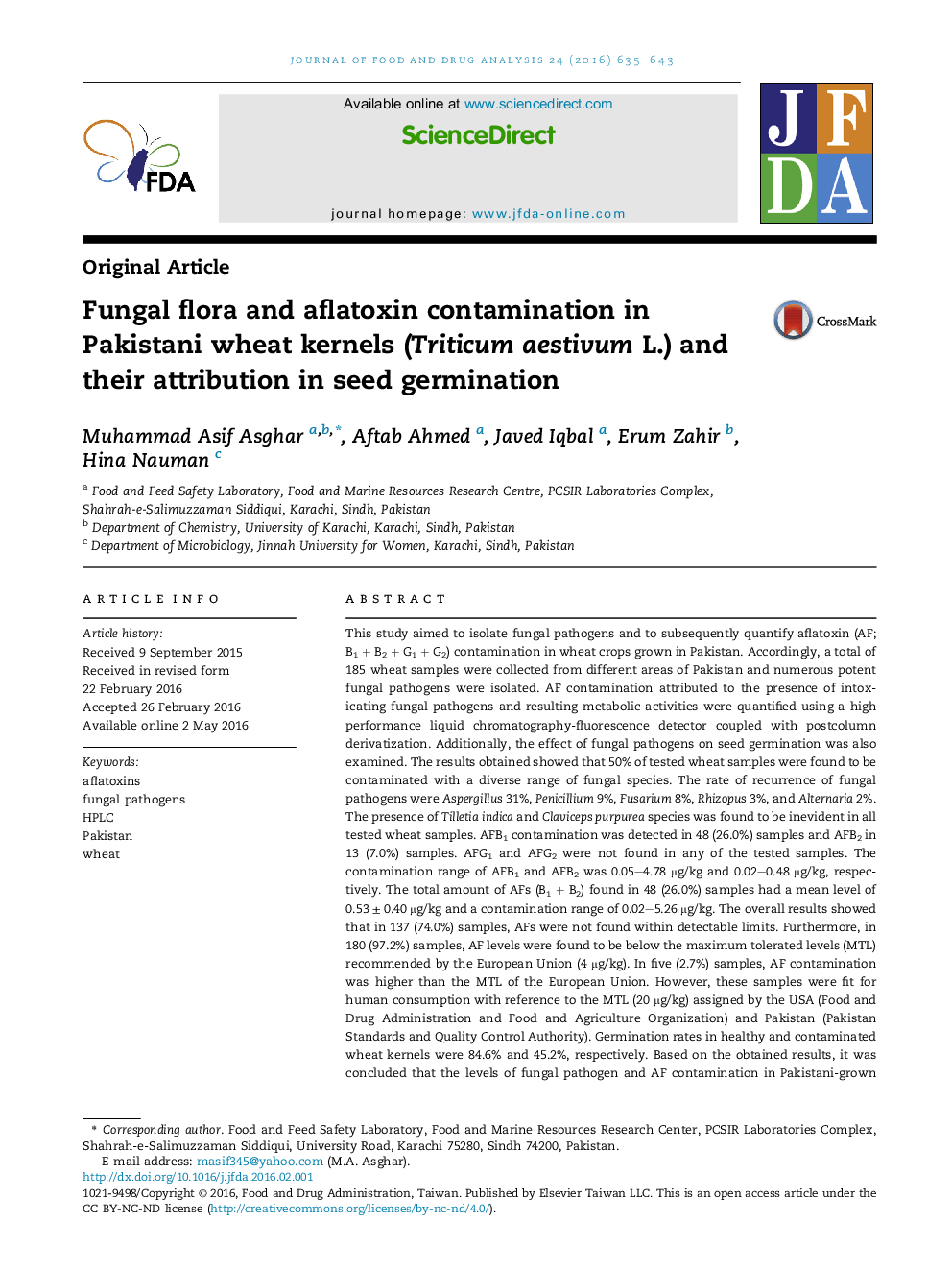| کد مقاله | کد نشریه | سال انتشار | مقاله انگلیسی | نسخه تمام متن |
|---|---|---|---|---|
| 2507249 | 1402936 | 2016 | 9 صفحه PDF | دانلود رایگان |

This study aimed to isolate fungal pathogens and to subsequently quantify aflatoxin (AF; B1 + B2 + G1 + G2) contamination in wheat crops grown in Pakistan. Accordingly, a total of 185 wheat samples were collected from different areas of Pakistan and numerous potent fungal pathogens were isolated. AF contamination attributed to the presence of intoxicating fungal pathogens and resulting metabolic activities were quantified using a high performance liquid chromatography-fluorescence detector coupled with postcolumn derivatization. Additionally, the effect of fungal pathogens on seed germination was also examined. The results obtained showed that 50% of tested wheat samples were found to be contaminated with a diverse range of fungal species. The rate of recurrence of fungal pathogens were Aspergillus 31%, Penicillium 9%, Fusarium 8%, Rhizopus 3%, and Alternaria 2%. The presence of Tilletia indica and Claviceps purpurea species was found to be inevident in all tested wheat samples. AFB1 contamination was detected in 48 (26.0%) samples and AFB2 in 13 (7.0%) samples. AFG1 and AFG2 were not found in any of the tested samples. The contamination range of AFB1 and AFB2 was 0.05–4.78 μg/kg and 0.02–0.48 μg/kg, respectively. The total amount of AFs (B1 + B2) found in 48 (26.0%) samples had a mean level of 0.53 ± 0.40 μg/kg and a contamination range of 0.02–5.26 μg/kg. The overall results showed that in 137 (74.0%) samples, AFs were not found within detectable limits. Furthermore, in 180 (97.2%) samples, AF levels were found to be below the maximum tolerated levels (MTL) recommended by the European Union (4 μg/kg). In five (2.7%) samples, AF contamination was higher than the MTL of the European Union. However, these samples were fit for human consumption with reference to the MTL (20 μg/kg) assigned by the USA (Food and Drug Administration and Food and Agriculture Organization) and Pakistan (Pakistan Standards and Quality Control Authority). Germination rates in healthy and contaminated wheat kernels were 84.6% and 45.2%, respectively. Based on the obtained results, it was concluded that the levels of fungal pathogen and AF contamination in Pakistani-grown wheat are not a potential threat to consumer health. However, control procedures along with a strict monitoring policy are mandatory to further minimize the prevalence of fungal carriers and the potency of AFs in crops cultivated in Pakistan.
Figure optionsDownload as PowerPoint slide
Journal: Journal of Food and Drug Analysis - Volume 24, Issue 3, July 2016, Pages 635–643